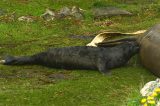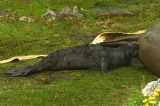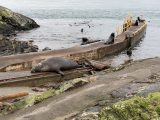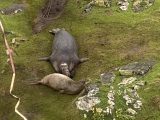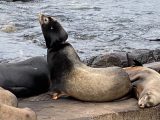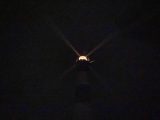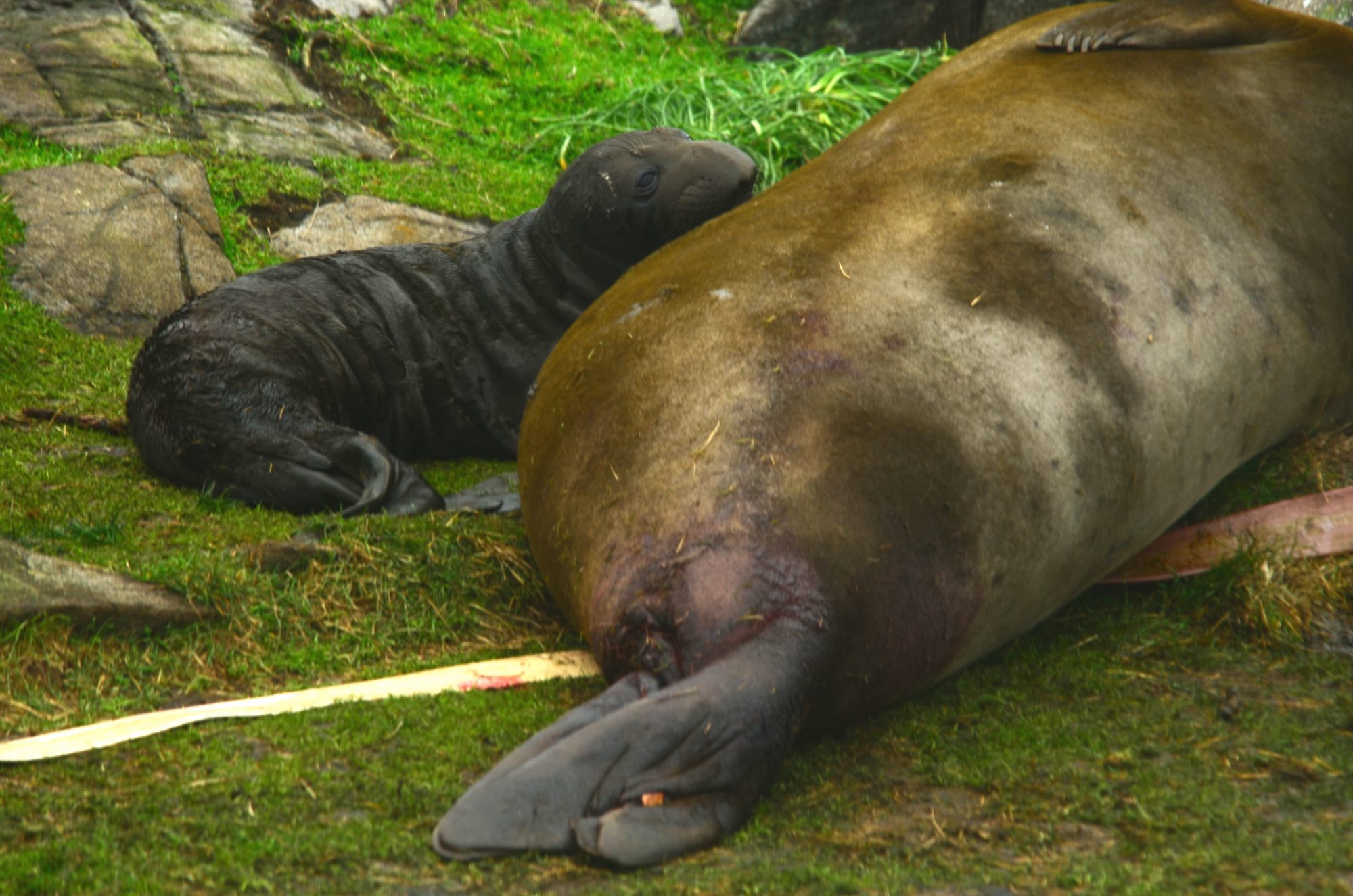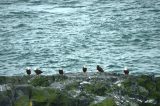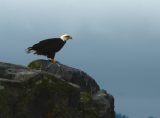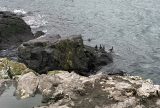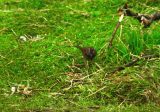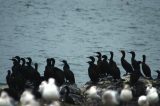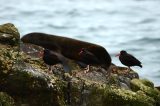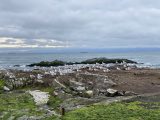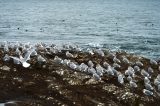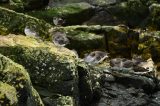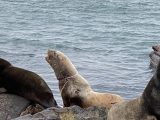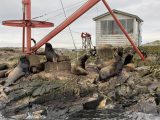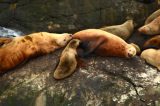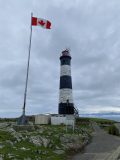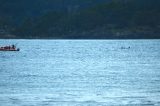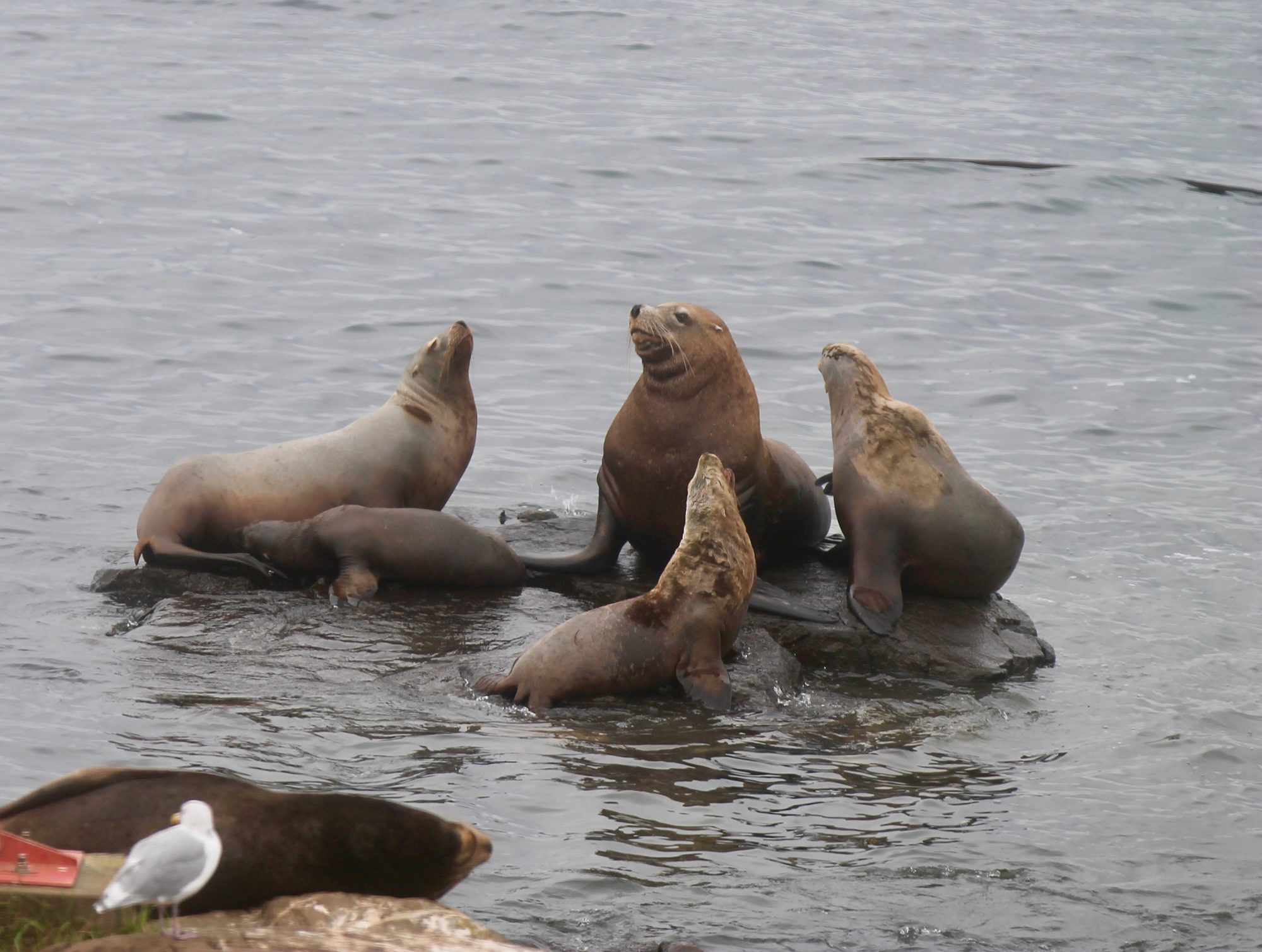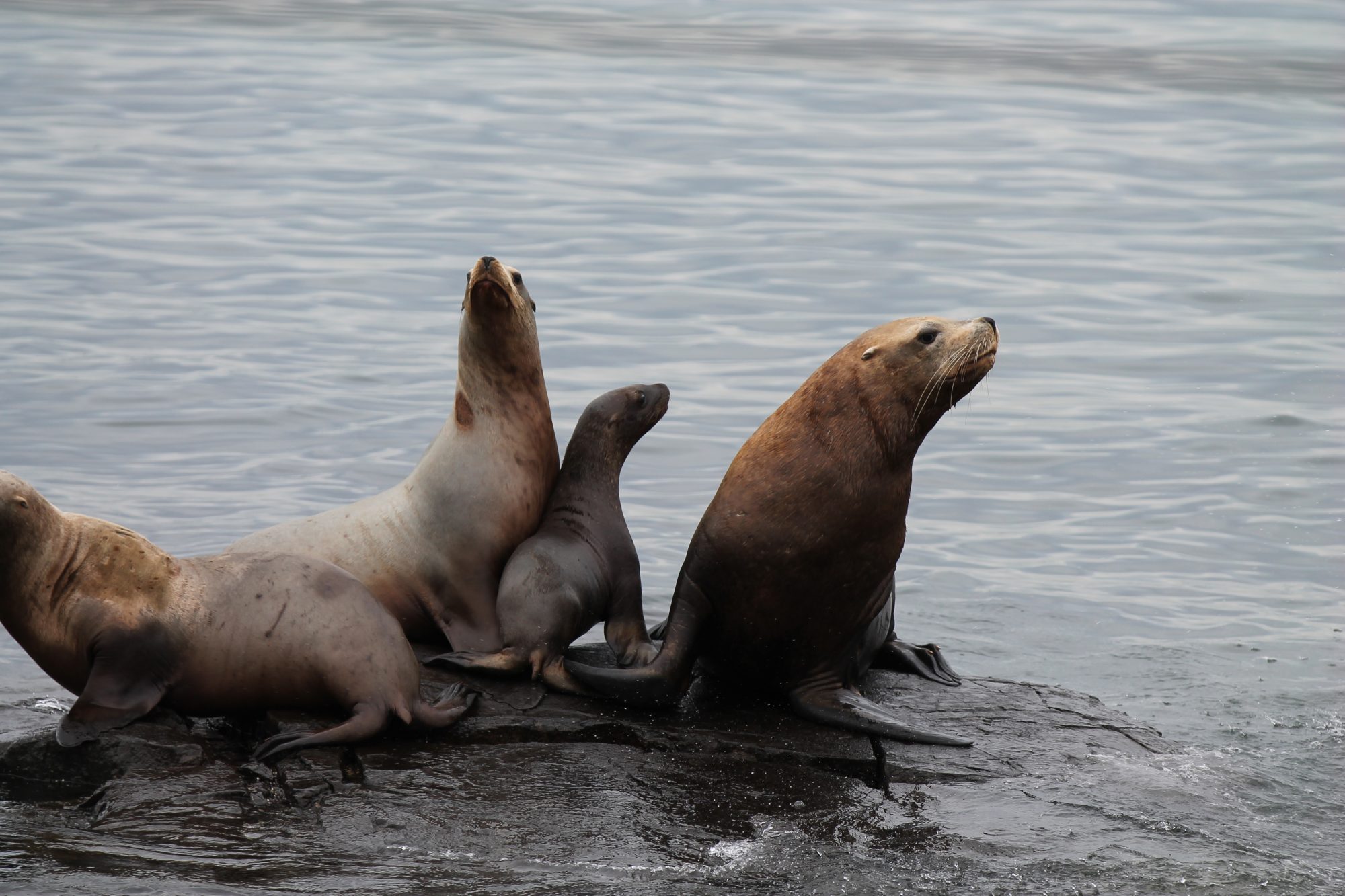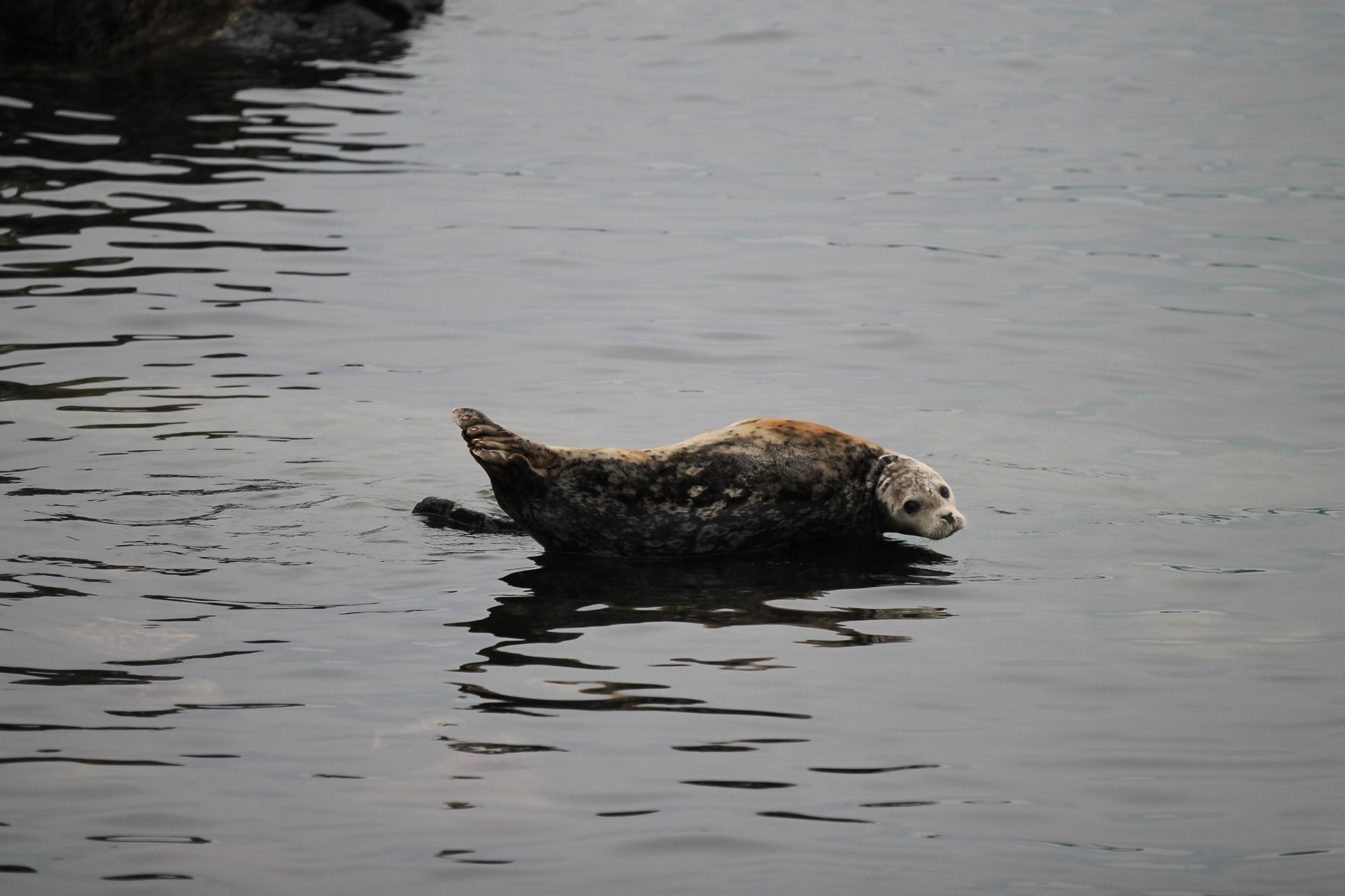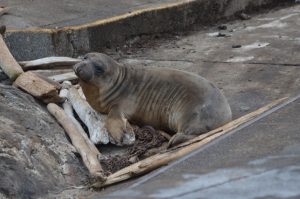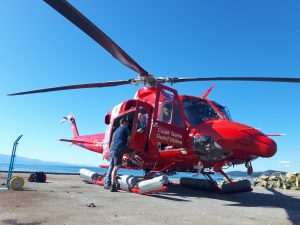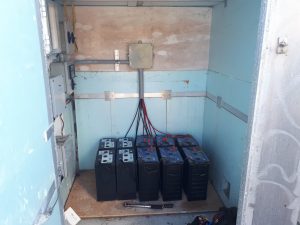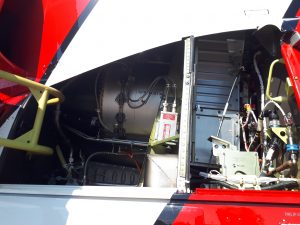Wind: Yesterday 5-15 knots W to N; Today 0-18 knots SW to E
Sea State: up to 1 m chop
Visibility: 10-15 NM
Sky: overcast with light rain this evening
Temperature: 8-9 C
Atmospheric CO2: 412.75 ppm (recorded by NOAA at Mauna Loa Observatory, Hawaii)
The one day old elephant seal pup is doing well. It seems to have got the hang of nursing. The alpha male elephant seal, who in the past has been referred to as Bernard, interacted with the pup and mother several times today.
I heard from elephant seal researchers in California that the new mother is T562, who also had a pup on January 4, 2019 on Race Rocks. She was born in the 2010-2011 breeding season on SE Farallon Island, near San Francisco. Until the beginning of 2019, she hadn’t been recorded anywhere since her birth. See Garry Fletcher’s post from February 9th about the elephant seal cow.
Last breeding season, three elephant seal births occurred between January 4 to 20. I will keep a look out for more elephant seal arrivals. Usually, they haul out and then give birth a few days later. Although, the new mother T562 was here for a couple weeks before she gave birth.
The entangled california sea lion is still present on the rocks near the winch and jetty. There has been no sign for the past two days of the entangled steller sea lion.
A previously rescued california sea lion was spotted today and appears to be doing well. More can be read about the care given to that sea lion during the visit by the Marine Mammal Rescue Centre, as detailed in Laas’ post from November 9.
Several eco tour boats have been in the reserve each evening. Yesterday, SCUBA divers were in the water near the North Rocks.
Here is a video of the new elephant seal family:
- The elephant seal pup is getting the hang of nursing.
- A black turnstone joins in to sample some milk.
- The alpha male elephant seal is sliding back up the ramp from a morning swim.
- Elephant seal family viewed from the lighthouse. The pup is underneath or possibly in the large male’s mouth
- One of the two california sea lions that were rescued by the Marine Mammal Rescue Centre on November 5. The neck wound from entanglement appears to be continuing to heal. It is identified by the tags VA017 and VA019 on its fore flippers.
- A beacon of light on a dark and windy night.

